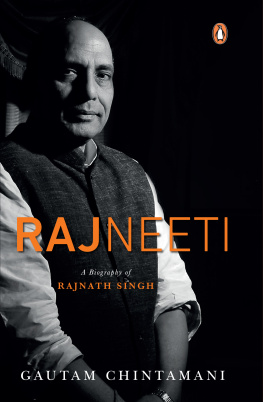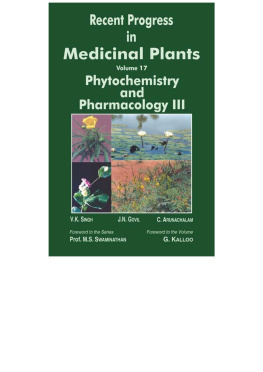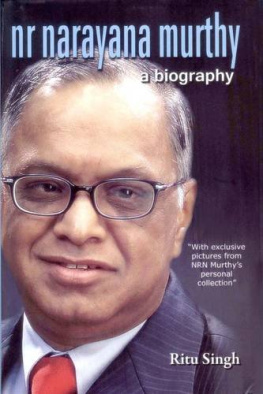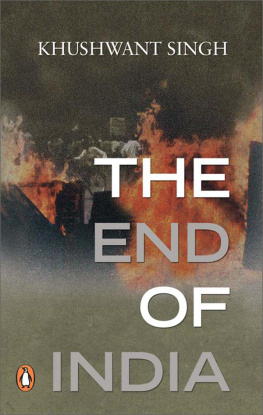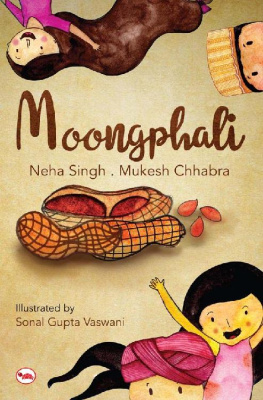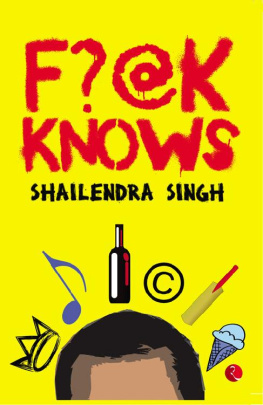Rajneeti: A Biography of Rajnath Singh - Rajneeti
Here you can read online Rajneeti: A Biography of Rajnath Singh - Rajneeti full text of the book (entire story) in english for free. Download pdf and epub, get meaning, cover and reviews about this ebook. year: 2019, publisher: Penguin Random House India Private Limited, genre: Politics. Description of the work, (preface) as well as reviews are available. Best literature library LitArk.com created for fans of good reading and offers a wide selection of genres:
Romance novel
Science fiction
Adventure
Detective
Science
History
Home and family
Prose
Art
Politics
Computer
Non-fiction
Religion
Business
Children
Humor
Choose a favorite category and find really read worthwhile books. Enjoy immersion in the world of imagination, feel the emotions of the characters or learn something new for yourself, make an fascinating discovery.
- Book:Rajneeti
- Author:
- Publisher:Penguin Random House India Private Limited
- Genre:
- Year:2019
- Rating:4 / 5
- Favourites:Add to favourites
- Your mark:
- 80
- 1
- 2
- 3
- 4
- 5
Rajneeti: summary, description and annotation
We offer to read an annotation, description, summary or preface (depends on what the author of the book "Rajneeti" wrote himself). If you haven't found the necessary information about the book — write in the comments, we will try to find it.
Rajneeti — read online for free the complete book (whole text) full work
Below is the text of the book, divided by pages. System saving the place of the last page read, allows you to conveniently read the book "Rajneeti" online for free, without having to search again every time where you left off. Put a bookmark, and you can go to the page where you finished reading at any time.
Font size:
Interval:
Bookmark:




PENGUIN BOOKS
 PENGUIN BOOKS
PENGUIN BOOKSShri Rajnath Singh is a stalwart of Indian politics who has infused a rare vibrance to its language and idioms. Intensely rooted and deeply connected with people, Shri Singhs story is one of triumph and tribulations; a story of a grass-roots BJP worker who has risen through the ranks due to sheer hard work and commitment. His life journey is a classic case for aspiring and young politicians. I am so happy Gautam Chintamani has tried to capture Rajnath Singhjis extraordinary journey in his book Rajneeti, which shall serve as a remarkable reference, and a valued treatise for future generationsYogi Adityanath, chief minister of Uttar Pradesh
When the history of Indias national security and the policies and actions taken to strengthen it is written, Prime Minister Modis leadership and his governments efforts will be regarded as a watershed. In this narrative, the critical role played by Shri Rajnath Singh as home minister will stand out. A policy that is anchored in nationalism, and one that departs from the western liberal construct of liberalismaccording to which the state is regarded as the sole violator of human rightswill be hailed as visionary. Under his leadership, regions that were earlier marred by violence and bloodshed are today on the path to attaining peace and prosperity.
This book is a testament to one of Indias finest home ministers. It captures how he has given salience to national interest and dealt a serious blow to those seeking the balkanization of our great nation. I would encourage the younger generation, in particular, to give this account a thorough read. They will find in these pages the journey of an inspiring leader, who has contributed to laying the foundations for a stronger and more robust IndiaHardeep Singh Puri, permanent representative of India to the United Nations, 200913; Minister of State (Independent Charge) for Housing & Urban Affairs and Civil Aviation; writer
Contemporary history tends to be under-documented in India. This book documents the life of an important politician who contributed immeasurably to the the post-1991 growth of the BJP. It weaves together the dynamics of state and national politics through the life story of an important player. A must-read for those who want to understand the BJPSwapan Dasgupta, columnist and member of Parliament, Rajya Sabha
To
Sir C.Y. Chintamani
(10 April 18801 July 1941)
My great-grandfather and the liberal thinker, fearless editor of the Allahabad-based The Leader from 1909 to 1934, whose uncompromising writing earned him the epithet of the Pope of Indian Journalism
A mans character is his fate.
Heraclitus

Bhagavad Gita: Chapter 2, Verse 37
If you fight, you will either be slain on the battlefield and go to the celestial abodes, or you will gain victory and enjoy the kingdom on earth. Therefore arise with determination, O son of Kunti, and be prepared to fight.
At 11.15 a.m. on 15 February 2019, Rajnath Singh, the minister of home affairs, left for Srinagar to take stock of the situation on the ground. The home secretary, the director general of the Central Reserve Police Force (CRPF), and the additional director of the Intelligence Bureau (IB) and other senior officials accompanied him. Under Singh, the MHA had dealt with terrorist attacks in Jammu and Kashmir, the insurgency in the north-east and Naxal-infested area or the Red Corridor with an iron hand, and the results were more than visible. He was sanguine that the government would give the armed forces a free hand to respond in the manner they deemed fit as they had done on a few occasions in the recent past. But it was the circumstance of his visit that burdened his heart.
Convoys ferrying CRPF personnel were a common sight along the highway that connects Jammu and Srinagar. In the summers, the slew of vehicles would criss-cross the 295-kilometre-long segment of National Highway 44 every alternate day, but snowfall and landslides in the winter months disrupted the pattern and increased the time gap between the convoys. As a result, the number of stranded security forces personnel went up routinely. They would also be shifted between various transit camps like the one in Jammu that could accommodate 1000 personnel at the most. Incessant snowfall in late January 2019 had made it difficult for the convoy to move between Srinagar and Jammu for nearly a fortnight. From 4 February, fresh snowfall had blocked the route and, finally, ten days later, when the road became motorable again, the convoy strength had gone up to more than the usual. The seventy-eight-vehicle convoy carrying 2547 paramilitary personnel left Jammu at 3.30 a.m. on 14 February.
As the convoy hit the halfway mark at Qazigund, some of the vehicles dropped out but the number remained the same as a few mobile bunkers joined the convoy. Post-Qazigund the probability of a terrorist ambush increased drastically and the mobile bunkers were meant to address that contingency. At 2.40 p.m., the convoy left Qazigund and a few minutes after 3 p.m. it crossed Pulwama village. It seemed like a routine exercise for the troops on the move, most of them returning from leave. They found the sights familiar. With the road-opening party sanitizing the JammuSrinagar highway for improvised explosive devices (IEDs) and men on guard from any possible lobbing of grenades or firing by terrorists, everything seemed in order. Perhaps this is why a civilian vehicle approaching from the slip road did not seem out of place. Until 2003, the CRPF could stop vehicles entering the convoy path, but being sensitive towards local commuters, non-military vehicles were now allowed to use the highway during convoy movements.
The Maruti Eeco drove along with the convoy for a few metres. As the convoy neared Ladhoo Mode, a point where the curve and the gradient in the mountainous highway compelled vehicles to slow down, the driver moved up to the fifth bus in the convoy. He rammed the car laden with 80 kilograms of high-grade RDX (Research Department Explosivea type of high explosive) into the convoy and triggered an explosion. The impact was fierce. The forty-five-seater bus was blown to smithereens and two more were damaged. The explosion killed forty jawans in an instant and left five critically injured. The blast radius spread over 200 metres and lay littered with debris mixed with the remains of the slain troopers.
Details of the attack emerged as news filtered in. This was the worst terror attack in Jammu and Kashmir in three decades. Initial reports suggested that nearly 300 kg of RDX was used but investigations over the course of the next few days revealed that the fidayeen had used ammonium nitrate and other chemicals along with 80 kilograms of high-grade RDX sourced from Pakistan and smuggled into Kashmir over a period of more than six months in gas cylinders and coal booths.
Font size:
Interval:
Bookmark:
Similar books «Rajneeti»
Look at similar books to Rajneeti. We have selected literature similar in name and meaning in the hope of providing readers with more options to find new, interesting, not yet read works.
Discussion, reviews of the book Rajneeti and just readers' own opinions. Leave your comments, write what you think about the work, its meaning or the main characters. Specify what exactly you liked and what you didn't like, and why you think so.

